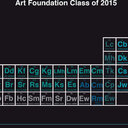Conformationally constrained analogues of diacylglycerol. 12. Ultrapotent protein kinase C ligands based on a chiral 4,4-disubstituted heptono-1,4-lactone template.
Keywords
Abstract
Conformationally constrained analogues of diacylglycerol (DAG) built on a 5(-)[(acyloxy)methyl]-5-(hydroxymethyl)tetrahydro-2-furanone template (1, Chart 1) were shown previously to bind tightly to protein kinase C alpha (PK-C alpha) in a stereospecific manner. These compounds, however, racemized readily through rapid acyl migration and lost biological potency. In order to circumvent this problem, the "reversed ester" analogues were designed as a new set of PK-C ligands. This reversal of the ester function produced some new DAG mimetics that are embedded in a C-4 doubly-branched heptono-1,4-lactone template. The reversed ester analogues were impervious to racemization, and their chemically distinct branches facilitated the enantiospecific syntheses of all targets. Compound 2, the simplest reversed ester analogue of 1 (Chart 1), exhibited a 3.5-fold reduction in binding affinity toward PK-C alpha which we attributed to the loss of a stabilizing gauche interaction that caused the ester branch in 2 to be more disordered than in the normal ester 1. However, conversion of the propanoyl branch of 2 into a propenoyl branch restored binding affinity (3 versus 5). As expected, the compounds bound to the enzyme with strict enantioselectivity (3 and 5 versus 4 and 6). Functionalization of the propenoyl-branched compounds as alpha-alkylidene lactones, in a manner which proved successful with the 5(-)[(acyloxy)methyl]-5-(hydroxymethyl)tetrahydro-2-furanone template (9 and 10), produced stable compounds with equivalent ultrapotent binding affinities for PK-C alpha (7 and 8). The additional incorporation of the propenoyl-branched carbonyl into a gamma-lactone ring was performed (11-14) not only to derive a possible additional entropic advantage but also to confirm the spatial disposition of this carbonyl function in the ligand-enzyme complex. Although no additional entropic advantage was derived, the high binding affinities displayed by compounds 11 and 12 helped to establish the correct orientation of the equivalent carbonyl group in PK-C-bound DAG. As expected, these DAG analogues activated PK-C alpha. The most potent agonist, compound 8, stimulated phosphorylation of the alpha-pseudosubstrate peptide, and in primary mouse keratinocytes it caused inhibition of binding of epidermal growth factor with an ED50 of approximately 1 microM. In contrast to the phorbol esters, compound 8 did not induce acute edema or hyperplasia in skin of CD-1 mice, and its pattern of downregulation with several PK-C isozymes was different from that of phorbol 12-myristate 13-acetate (PMA).




